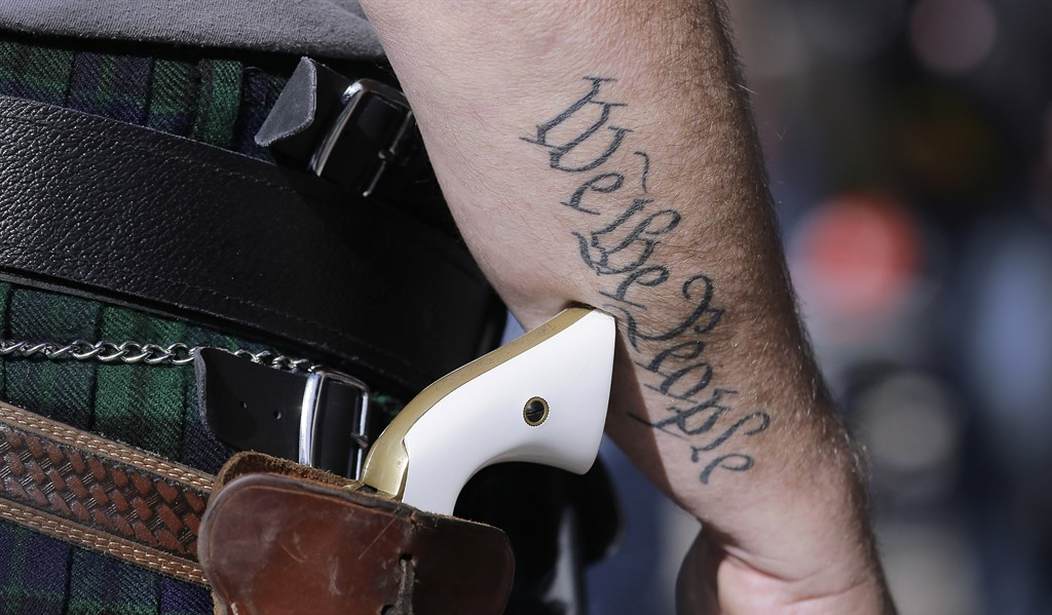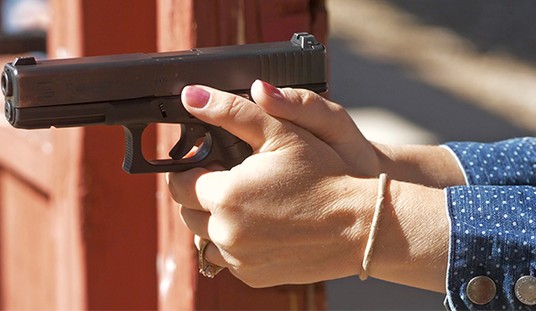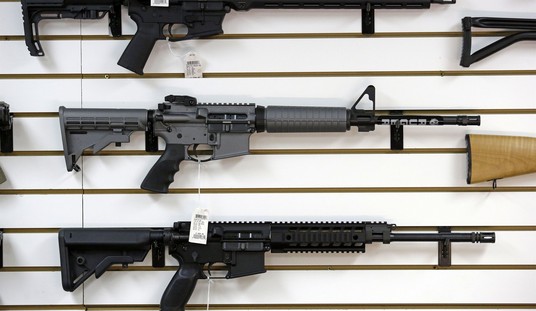It’s a question that could have real-life consequences for millions of gun owners, as well as shaping the future of bans on commonly owned firearms like the AR-15 and other modern sporting rifles.
According to gun control advocates like California Attorney General Rob Bonta, “assault weapons” fall outside the scope of the Second Amendment, in part because they are almost never used in self-defense. As Bonta wrote in one of the briefs filed in the Miller case:
Bruen indicates that mere ownership is not enough to qualify a weapon for protection under the Second Amendment; rather, the weapon must be suitable for use in selfdefense and be “commonly used” for that purpose in practice. In contrast to handguns, military-style rifles like AR-platform rifles—which the National Shooting Sports Foundation now refers to as “modern sporting rifles”— are not commonly owned, comprising less than 5% of the total American gun stock compared to 50% for handguns. And such rifles are not well-suited for self-defense. Tellingly, Plaintiffs point to no evidence, such as survey data or studies, showing that military-style rifles, let alone such rifles equipped with qualifying accessories, are used frequently in self-defense or have ever been needed to engage in effective self-defense.
… While most defensive gun uses involve handguns, data indicate that approximately 2–4% of all such uses involved any type of rifle, meaning that an even smaller percentage involved a military-style rifle or, more specifically, such a rifle equipped with qualifying accessories. And there is no evidence concerning the actual uses of pistols or shotguns that would qualify as “assault weapons” under the AWCA. Again, because Penal Code section 30515 is severable, Plaintiffs must show that each restricted weapons configuration—not just semiautomatic rifles or “modern sporting rifles” in general—are in “common use” for self-defense.
There are a couple of issues with Bonta’s argument, starting with the fact that the Second Amendment doesn’t just cover firearms that are most commonly used in self-defense. If that were the case (and there are judges who’ve argued that very thing) then almost every firearm with the exception of handguns could be banned, from bolt-action rifles to over-under shotguns. The Supreme Court’s decision in Heller noted the paramount importance of the right to self-defense in connection with the Second Amendment, but went on to elaborate that arms that are used for “traditionally lawful purposes” are, prima facie, protected by the right to keep and bear arms.
But Bonta’s argument also fails to reckon with what exactly constitutes “use” of a firearm in self-defense. Is a gun used in self-defense only when the trigger is pulled? What about when it is displayed? Is a gun “used” for self-defense if that’s the primary intention of the owner, even when they’re aren’t actively engaged in defending themselves from an attacker? This was one of the questions that U.S. District Judge Roger Benitez wrestled with in his decision striking down the state’s ban on “assault weapons.”
The State suggests that standard AR-15-type rifles might be commonly owned, but are not used for self-defense. The State says that there is no evidence that firearms equipped with the prohibited accessories or semiautomatic centerfire rifles of less than 30 inches in length are “commonly used” for self-defense. Once again, the burden is on the government to prove that remarkable claim. It does not take a Nobel laureate to figure out that if Americans own 400 million guns and 400 million gun crimes are not being committed, that Americans are using their guns for something other than crime. If Americans own 24.4 million AR-15s and 24.4 million gun crimes are not being committed with AR-15s, Americans must be using them for lawful purposes ome people actively use AR-15s for hunting or sport or target practice. Probably the vast majority of Americans that own guns keep them and use them for self-defense the same way that a driver puts on a seat belt in the case of a collision. Though collisions rarely happen, the seat belt is used for protection and to be ready for the unexpected collision. A reserve canopy is being used on a parachute jump, although it is not deployed, in case the main parachute fails. A cell phone in one’s pocket is being used when waiting for a telephone call or when one might need to make a call. An AR-15 under one’s bed at night is being used for self-defense even when the night is quiet. A person may happily live a lifetime without having to fire their gun in self-defense. But that is not to say that such a person does not use their gun for self-defense when he or she keeps it under the bed with a hope and a prayer that it never has to be fired.
Here is an illustrative example. In Uniontown, Pennsylvania, an 81-year old man and his elderly sister were at home when an intruder broke in. In the middle of the ensuing struggle, the victim fired one shot from his gun. The victim said he had never before fired the gun and that it had been sitting on his nightstand for thirty years.232 Had his gun been an AR-15 he kept under his bed, the State would say that he did not “use” his AR-15 for self-defense during those preceding thirty years. And this Court would disagree. This Court would say that the elderly man “used” his AR-15 for self-defense every night for the thirty years he kept it ready under his bed, including the night of the burglary. In exactly the same way, the disabled man in Florida who was shot, but shot back with his AR-15, “used” his rifle on the night of his attack and on all of the other nights when his gun sat ready in case of attack. But the State seems to say that citizens have no right to keep an AR-15 for self-defense unless they often use it to shoot attackers. That is incorrect. “There is no reason to think that semi-automatic rifles are not effective for self-defense in the home, which Heller explained is a core purpose of the Second Amendment right.” If the test was concerned with the actual firing of a weapon, the Heller court would have looked at statistical averages about how often handguns were fired for self-defense. The statistic was never mentioned.
Here’s another illustrative example that makes Benitez’s point. A woman in Calhoun County, Michigan was recently assaulted by a man after she pulled into her garage last week. As she walked around to the trunk of the car, the man attacked her, but she was able to draw her concealed handgun. When the assailant spotted the pistol in his hand he took off running. No shots fired, but the presence of the firearm in her hand was enough to prevent the attack from escalating further.
So, did she use her gun in self-defense that night? The anti-gunners would say “no.” Only if she had pulled the trigger could that be deemed as an actual “use” of a firearm to defend herself.
Even the reporter with the local TV station that reported the assault, however, could see that the gun was used, which is why their headline was “woman uses concealed weapon to scare off attacker”.
The debate over what constitutes a “use” of a firearm is ridiculously silly, but it’s indicative of the weak arguments that the anti-gunners have at their disposal when trying to prohibit the right to own arms that are in common use for a variety of lawful purposes. Bonta won’t be the last attorney general to make that pitch to a judge, and the next to try out that argument may even find a judge who’s more amenable than Benitez was, but Benitez’s logic should win the day when SCOTUS finally gets its hands on a case dealing with a ban on “assault weapons.”









